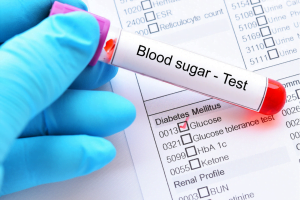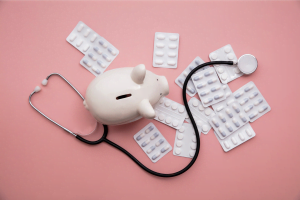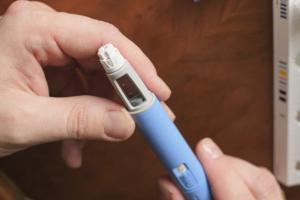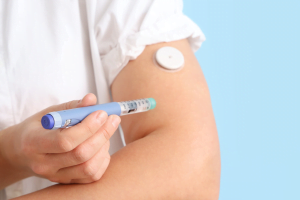What are Thiazolidinediones (TZDs) Drugs?
Thiazolidinediones (also known as TZDs or glitazones) are a class of oral antidiabetic medications for people with type 2 diabetes. Along with a healthy diet and exercise plan, TZDs are generally taken once or twice a day, with or without food, to boost insulin sensitivity in the liver and in muscle and fat tissue.
How do TZDs Medications Work?
TZDs work by targeting the PPAR-gamma receptor, which affects how your body metabolizes sugar (glucose) and stores fat. They are often prescribed when other medications for type 2 diabetes are unsuitable or have failed to adequately lower blood sugar levels. They can be taken with other diabetes medicines, such as sulphonylureas, Metformin or insulin. Glitazones can be taken alone, but they are often found in combination drugs, which are medicines with two or more active ingredients.
List of TZDs Drugs
- Pioglitazone (Actos) is a thiazolidinedione that can be taken alone. Pioglitazone is often mixed with other active ingredients, like metformin (to make Actoplus Met) and glimepiride (to make Duetact).
- Rosiglitazone (Avandia) is another thiazolidinedione that can be taken either on its own or in combination with other drugs like metformin (to make Avandamet) and glimepiride (to make Avandaryl).
In cases where weight is a health concern, a DPP-4 inhibitors may be prescribed since a primary side effect of TZDs is weight gain.
When taken alone, thiazolidinediones do not typically cause low blood sugar (hypoglycemia), one of the most common side effects of most antidiabetic drugs. They are also generally considered safer if you have experienced kidney problems. In addition, TZD’s have been found to lower blood pressure and reduce a type of fat tissue found in the bloodstream called triglycerides, as well as raise “good” HDL cholesterol levels.
Before taking a thiazolidinedione, there are a few things you should know…
There are special considerations for women who are considering taking a TZD.
If you no longer menstruate, thiazolidinediones may cause you to begin menstruating again. This means that there is also a possibility that you could become pregnant while taking a TZD , even if you are taking an oral contraceptive.
It is not known whether TZD’s pass through breast milk or whether the medication can affect your unborn baby. If you are pregnant or breastfeeding, you should tell your doctor before taking this type of drugs.
It is also a good idea to let your doctor know of any other products you currently use, including prescriptions and over-the-counter remedies, such as vitamins and herbal supplements, to guarantee that they are safe to use in conjunction with a TZD medication.
Thiazolidinediones Side Effects
As with any medication, thiazolidinediones may cause some side effects. Because the targeted receptor acts on various genes, the side effects can vary among the various TZD medications. Some of these effects can be serious in nature, so if you suffer from any of the following symptoms, you should tell your doctor or health care provider:
- Heart failure
An increased risk of a heart attack or stroke has been associated with rosiglitazone (Avandia).
- Bladder cancer
An increased risk of bladder cancer has been associated with pioglitazone (Actos).
- Liver problems
Signs that thiazolidinediones are affecting your liver include nausea, vomiting, stomach pain, yellow skin and dark-colored urine.
- Fractures
An increased risk of fractures, particularly to the bones in the upper arm and feet, if you take rosiglitazone (Avandia) or pioglitazone (Actos).
- Diabetic macular oedema (DMO)
Fluid can build up on the part of the eye responsible for central vision, the macula. DMO may require laser surgery.
- Severe allergic reactions
Some people may suffer an allergic reaction to a TZD. If at any time you experience trouble breathing, chest pains, swelling of your face, lips, tongue or throat, stop taking any thiazolidinediones right away and get emergency medical attention.
The most common negative effects include
- weight gain
- fluid retention
- eyesight problems
- skin reactions (hives)
- muscle and chest pain
- infections
- headaches
- a runny nose and sore throat.
These mild side effects do not usually require medical attention and should fade as your body adjusts to the medication.
The symptoms of type 2 diabetes can worsen over time, so it is a good idea to book regular check-ups while taking a TZD in case your dose or type of medication needs to be changed. Thiazolidinediones can help keep your blood sugar within a healthy range and reduce your risk of any long-term complications associated with type 2 diabetes
Disclaimer: Please note that the contents of this community article are strictly for informational purposes and should not be considered as medical advice. This article, and other community articles, are not written or reviewed for medical validity by Canadian Insulin or its staff. All views and opinions expressed by the contributing authors are not endorsed by Canadian Insulin. Always consult a medical professional for medical advice, diagnosis, and treatment.





